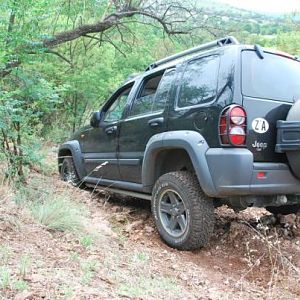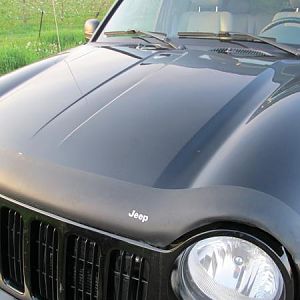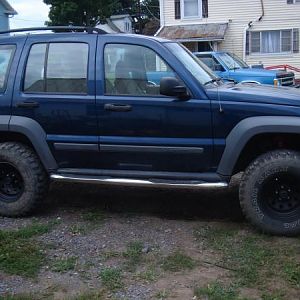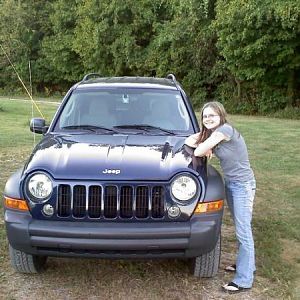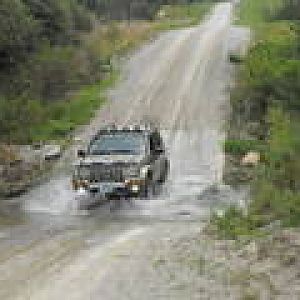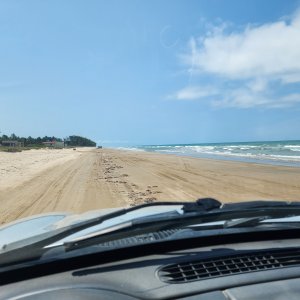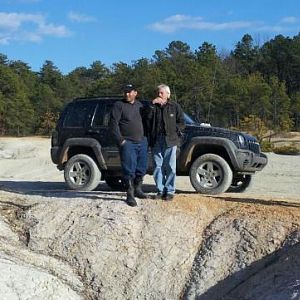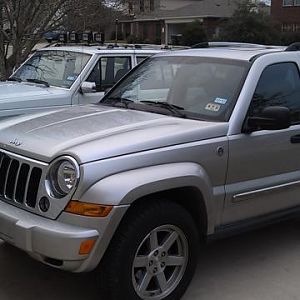Why would you not need them with an OME suspension lift as stated by ARB?
That's what I haven't figured out.
Just posted this over on LOST. I guess it fits perfect here too.
Well, Someone said that if you want the truth, get it straight from the source. Sooooo. I decided to ask ARB aka OME their thought about the usage of extended bumpstops. I think we can all agree that they would be considered the experts in this field. Right?
Here is my original message to them...
---------------------------------------
I have a technical question regarding the usage of the OME 927 springs to lift the Jeep Liberty. There is a large community of KJ owners at lostkjs.com which frequently have questions regarding lifting the KJ. It is generally accepted that the OME springs are hands-down the best, and most reliable long-term lift option for our KJs. However, there is always a debate around whether or not extended bumpstops are needed, required, or just a good safety net. For simplicity sake, I am limiting this to front suspension of the KJ.
Using the OME lift, OME 927 springs and NS131 shocks are used. No bumpstops are provided with this lift. Hear-say says that the reason no bumpstops are needed is because the OME front shocks have a bumpstop built into the shock internally. Is this true?
Another popular combination is the OME 927 springs and Rancho RSX 17505 shocks. In this case it is generally said that extended bumpstops be used to keep from over compressing or stacking the OME springs.
So the basic question I am asking is:
1. Does over compressing or stacking the OME springs weaken them, cause them to sag over time, lead to early failure, or cause added fatigue on the springs? (being an engineer myself, I know this answer, but would like to relay it directly from the manufacturer to others in this community that do not understand spring dynamics)
2. What is the designed minimum compressed length of the OME 927 springs? By this I mean the maximum compression not to exceed on a regular basis without causing permanant deformation of the springs.
Here is one of the many discussions regarding this bumpstop dilemma:
http://www.lostkjs.com/forum/phpBB2/viewtopic.php?p=410789#410789 Although the picture shown here has a spacer lift, I would assume that the same concept applies when adding longer springs such as the OME 927's.
Thanks in advance for any light you can shed on this subject.
----------------------------------------------
I quickly got a response from Marc. The same guy Tom had mentioned earlier. He is a tech specialist for Arb. But he didn't know the exact answer to the depth of design that I wanted, so he passed it on to engineering. Here is their reply - directly from the senior design engineer of OME spings.
---------------------------------
By adding a spring spacer without a bump stop spacer, you are creating a situation where you may over compress the spring. In the worst case, the spring will go solid before the bump stop has been contacted. The factory spring has been designed to work from its free height through ride height to minimum compressed height so that stresses do not exceed the limit of the spring material.
By adding the spring spacer without a bump stop spacer, you are increasing the deflection of the spring before the suspension bottoms out on the bump stop. As you increase spring deflection, you increase stress. You may increase stress to the point where the stress is higher than the limit for that spring material. In this situation, the spring will sag, lose height, or fail.
When designing the OME spring, we calculate the maximum stress that spring design will encounter when it is compressed past maximum bump stop compression. We use a high stress material to produce OME springs. This means the material can withstand very high stresses before it gets to the point where it will sag and lose height.
The amount of stress the spring experiences can be altered by changing wire diameter, spring body diameter and number of coils. Of course altering these variables also changes the spring rate, free height, and solid height. The spring rate needs to be correct to carry the load. The free height needs to be right to give the correct ride height and long enough so that the spring does not become untrapped and fall out at the full extension of the strut or shock. The solid height is also important. If the spring has too many coils or wire diameter is too thick, the spring will go solid before contacting the bump stop.
By adding a spring spacer to the factory spring and a bump stop spacer of the same thickness, the factory spring will not experience any greater stress than with the factory setup (so spring spacers or bump stop spacers). In this situation you have higher ride height but the same up travel or compression as the factory setup.
With the OME spring you have the benefit of lift and extra travel as we do not require fitting a bump stop spacer to prevent the spring being overstressed.
Marc your customers should be confident that the maximum stress the spring will encounter when correctly installed for its intended application will be within the maximum stresses the material can handle.
Senior Design Engineer
Old Man Emu
ARB Corporation Limited
------------------------------------------------
Now, all of that being said, I guess if you use OME springs alone to lift your KJ, then you don't need extended bumpstops. They say that they have designed the OME springs to allow for increased travel. No need to limit it by adding extended bumpstops.
But... From what they said, if you are installing a spacer lift (and this would include the OMEs when used in a Frankie) extended bumpstops are needed to prevent over compressing the springs.
--------------------------------
And for not using HD coils on a stock rig, I beg to differ there too. The warning that ARB states regarding this is that if you use HD coils on a "stock" rig, your KJ will ride higher than designed. Therefore, the CV angles MAY (but not necessarily WILL) be too steep and cause problems. But will the HD coils stack or over compress under the same flex as MD or LD coils? Nope.
---------------------------------
There you have it. Let the horse beating begin....
 lol
lol

